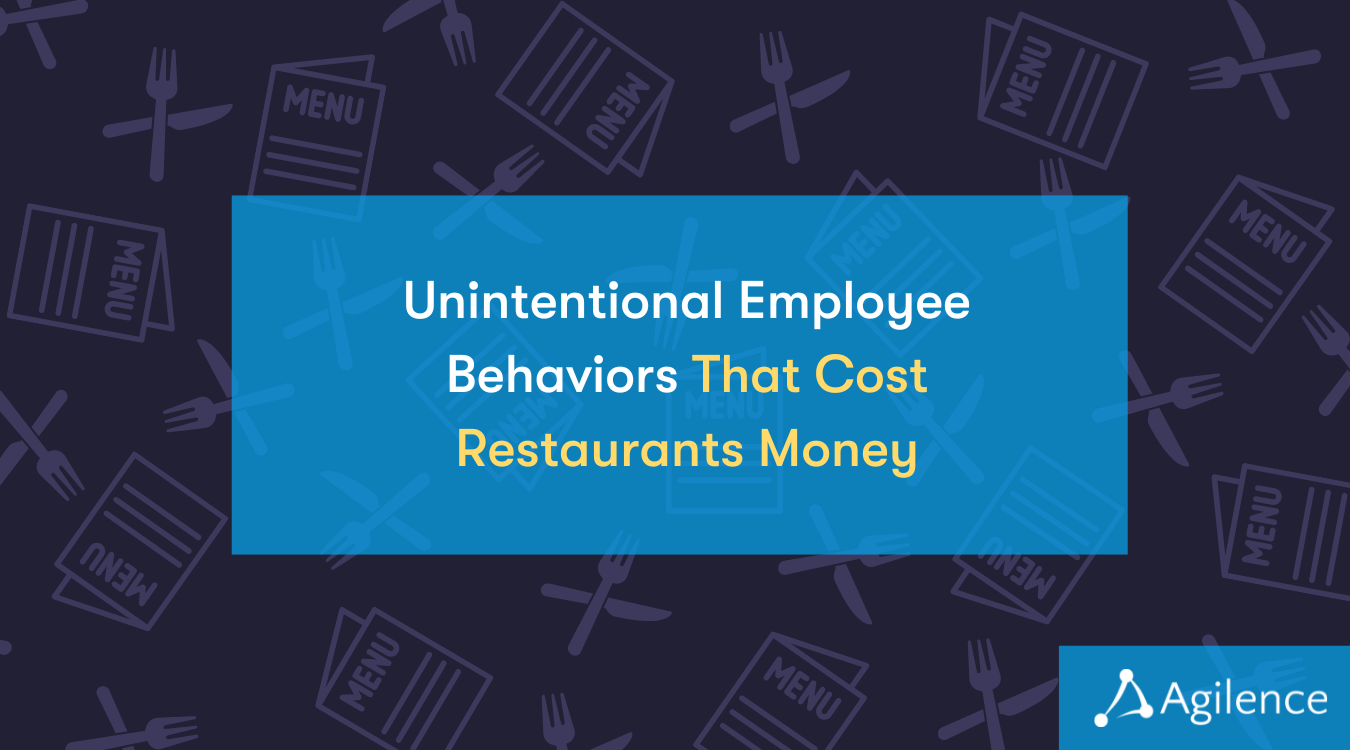7 Ways Employees Steal from Restaurants
Restaurant
Employees are the core of any business, but this is especially true in restaurants. It is the service industry after all. Although restaurant automation is increasing in some formats such as QSRs, restaurants continue to rely heavily on their team members. And with a labor shortage across the industry, hospitality employees are more valued than ever.
However, employees can be both a restaurant’s greatest asset as well as its financial threat. According to the same NRA study, 75% of restaurant inventory shrinkage in the US is due to employee theft, costing restaurants an estimated $20 billion per year. That adds up to about 4% of restaurant sales – in an industry that runs on thin margins that are often between 3-5%.
For restaurant owners and operators, combatting employee theft must be a priority to maintain profitability. And with high turnover among restaurant employees, sometimes new hires aren’t properly vetted. Without systems in place to monitor transactions and more, a bad hire can cause a lot of damage to a restaurant’s bottom line.
In this article, we look at 7 different ways employees can steal from restaurants and break out some of the methods in each.
1. Cash Theft
While cash has been on the decline as a payment method and restaurants see a higher percentage of card payments than other businesses, cash remains an important payment source. While according to one survey, dine-in restaurants accept 75% of all payments with a card, QSRs have a notably high percentage of cash customers, with nearly 40% of customers paying with cash.
The nature of cash payments makes them particularly vulnerable to employee theft. Below are a few methods through which cash theft commonly occurs:
Skimming Off the Register Before Sales Are Recorded
Cash skimming involves employees taking cash from customers without ever recording the sales on the POS system. By not entering the transaction, the employee can pocket the money directly, leaving no trace of the sale.
Not Ringing Up Sales and Keeping the Cash
Similar to skimming, this tactic sees employees serving customers—often with quick, easily handed over items like drinks—and then keeping the cash without registering the sale. This practice is particularly common in fast-paced environments where immediate oversight is challenging.
Creating Fake Refunds and Pocketing the Money
Some employees might process refunds for transactions that either did not occur or involve items never returned, then take the refunded cash for themselves. This requires manipulation of sales records and often preys on less stringent auditing processes.
Checks Modified to Zero
A more calculated method involves modifying checks to show a zero balance after being open for several hours. Employees might use this technique to void items already served, pocketing the equivalent cash under the guise of correcting a mistake or customer dissatisfaction.
Voiding Transactions After Cash Sales
After completing a cash transaction, an employee might void the sale or engage in a no-sale transaction, removing any record of the sale and keeping the cash. This often relies on the ability to perform voids without immediate managerial approval or oversight.
Specialty Drink Scheme
In this scheme, an employee serves a specialty drink (like a margarita), charges the customer, and then voids the drink order to pocket the cash. They might justify the void by claiming the drink was unsatisfactory or pretend the cash was a tip for exceptional service.
2. Credit Card Fraud
Credit card fraud involves the unauthorized use of a customer's credit card information or the manipulation of credit card transactions to siphon off funds illicitly. While credit card transactions have more protection than cash, this doesn’t make them immune to employee theft.
Cases of credit card theft by restaurant employees, especially at QSR’s, happen regularly. In December of 2023, employees at Burger King and Wendy’s in Mobile, AL, were arrested in separate cases of credit card theft, while in October, 10 employees at an Indiana Hardee’s were caught stealing $15,000 from customers in a credit card scheme.
Below are several methods through which employees might engage in this type of scheme:
Stealing Customer Card Information
Employees may engage in skimming, which involves copying the information from a customer’s credit card using a small device known as a skimmer. They then have access to the customer’s card information, which they can use to make unauthorized purchases or sell or give that access to others. One case involved waiters at several Manhattan steakhouses using skimmers to extract card information from patrons, which was then used to fund a luxury goods reselling scheme.
While it might be rare for employees to engage in such organized fraud, an employee might also steal customer card information in a more low-tech way by discreetly taking a photo of a customer's credit card with a smartphone or writing down the card details while processing a transaction. This still poses a high risk as the employee now has access to the card number, expiration date, and CVV, allowing them to make online or over-the-phone purchases.
In some cases, employees might engage in phishing by asking customers for additional information under the guise of verifying the card or transaction. For example, they might ask for the customer's billing zip code or CVV, claiming it's necessary for the payment process, and then use this information for fraudulent activities.
Adding Extra Tips Without Consent
Some employees may take the liberty of adding extra amounts to the tip field of a credit card slip after the customer has signed it. This unethical practice inflates the total charge to the customer’s card, with the additional funds going directly to the employee. This type of theft can be challenging to detect, especially if the amounts are small and customers don't scrutinize their statements closely.
Creating Fake Customer Refunds
Similar to the cash theft method of fake refunds, an employee could process a refund to a credit card they control, pretending it's for a dissatisfied customer. This requires access to the POS system and the ability to manipulate transaction records.
"Friendly Fraud"
This type of fraud occurs when an employee processes a payment on a friend's or relative's card with the understanding that the charge will later be disputed. The result is that the employee and the accomplice split the refunded amount, while the restaurant absorbs the loss.
Phantom Orders and Manipulating Point-of-Sale Systems
Advanced fraud might involve manipulating the POS system to alter the amounts charged to a card, either increasing or decreasing charges without authorization, often to cover up other discrepancies or thefts.
For instance, employees might add unauthorized charges by creating fake orders or inflating actual orders, then voiding these transactions after the customer has been charged. The employee then pockets the cash equivalent of the voided sale, exploiting the discrepancy between the recorded sales and the actual sales.
3. Inventory Theft
Inventory theft is a significant challenge in the restaurant industry, affecting everything from food and alcohol to supplies and equipment. The theft of these items raises food cost and prime cost, hurting margins, and can lead to substantial financial losses and disrupt the operational efficiency of a restaurant. Employees might engage in various methods to steal inventory or cover up their actions, including:
Direct Theft of Food, Alcohol, or Supplies
The most straightforward method of inventory theft involves employees directly taking items for personal use or to sell outside the restaurant. This could range from food products and expensive cuts of meat to bottles of alcohol or even kitchen supplies. Such theft often exploits gaps in inventory management and oversight.
Creating Fake Orders
Some employees might create fake orders or manipulate order quantities to account for stolen inventory. For instance, an employee could generate a bogus order for extra ingredients or supplies, take the excess for personal use, and then adjust inventory records to match.
Voiding Transactions to Cover Up Theft
In a similar vein to manipulating orders, employees might void transactions or create fake returns after removing items from inventory. This action makes it appear as though the items were never sold or were returned by a customer, thereby justifying the discrepancy between physical inventory counts and sales records.
Misreporting Waste or Spoilage
Employees may intentionally misreport items as wasted or spoiled to account for missing inventory. By claiming that food had to be thrown away due to spoilage or preparation errors, they can mask the theft of items from the kitchen.
Theft During Receiving
Theft can also occur during the receiving process when goods are delivered to the restaurant. Employees might intentionally fail to record certain items on delivery invoices, allowing them to take the unaccounted items without detection.
4. Time Theft
Time theft in the workplace occurs when employees receive compensation for hours they didn’t actually work. While this might seem less egregious than stealing inventory, it impacts the bottom line just the same, inflating your labor costs. Various methods exist through which employees might engage in time theft, exploiting gaps in timekeeping systems or managerial oversight.
Unauthorized Clocking In and Out
The most simple and common way to commit time theft is that employees may clock in earlier than their scheduled start time or clock out later than their actual end time to inflate their worked hours. Alternatively, they might have a colleague clock in or out for them—a practice known as "buddy punching"—to get paid for time they were not present.
Disappearing on the Job
Some employees take unscheduled breaks or disappear from their work area without authorization, effectively getting paid while not working. This includes leaving the premises or engaging in personal activities during work hours.
Rounding Time Up
When manually recording time, some individuals might round up their hours worked more generously than is accurate. For example, if they worked until 5:52 pm, they might record it as 6:00 pm, consistently overreporting their work time.
Sleeping on the Job or Doing Personal Activities During Work Hours
Although it may seem obvious, sleeping during work hours is a form of time theft. This is particularly relevant in jobs with long hours or overnight shifts where oversight may be less stringent.
With the accessibility of smartphones and the internet, employees might spend significant amounts of work time on personal activities, such as browsing social media, online shopping, or managing personal affairs. This diverts paid work time to non-work-related tasks.
Taking Extended Breaks
Taking longer-than-authorized breaks is a common form of time theft. Employees might extend lunch breaks or other scheduled breaks without making up the time, reducing their actual work hours.
Due to a historic hospitality labor shortage, you may choose to give employees some leeway when it comes to some of these infractions, especially if they are minor. However, when abuse is allowed to expand too much or continue unchecked, so does the impact on your bottom line.
The remaining 3 methods will appear in our upcoming whitepaper, stay tuned!
Stop Employee Theft with Analytics
Combatting employee theft can yield huge dividends for multi-location restaurant operators, yet many continue to lack a dedicated restaurant Loss Prevention (LP) strategy. Many restaurants rely on internal reporting tools and POS data which may lack depth, customizability, and multiple data sources and fail to provide actionable insights to on-the-ground personnel.
That’s where Agilence Analytics for Restaurants comes in. With Agilence, you can
- Detect internal theft by automatically flagging suspicious voids, transfers, and comps
- Flag indicators of external theft like gift card fraud and promotion abuse
- Confirm suspicious behavior with video of the transaction
Agilence Restaurant Core comes with a number of pre-built reports and dashboards out of the box, specifically designed for identifying theft and fraud and minimizing shrink. These dashboards, combined with alerts, make it easier to identify sales-reducing behaviors and can reveal fraudulent activities, discount abuse, voided transactions, return and cancellation patterns, employee behavior outliers, and much more.
Related Articles
.png)
How to Determine if Employees are Skimming Cash
Cash is king when it comes to employee theft. Cash skimming is one of the most common forms of employee theft, also known as ...
Unintentional Employee (and Manager) Behaviors That Cost Restaurants Money
While employee theft is the biggest contributor to shrink in restaurants, it’s not the only employee behavior hurting restaur...
How to Thwart Restaurant Employee Theft: The ‘Wagon Wheel’ Scheme
As a restaurateur, you’d like to believe that all of your employees are honest people. While many of them are, industry surve...Subscribe to our blog
Receive free educational resources like exclusive reports, webinars, and industry thought leadership articles straight to your inbox.

